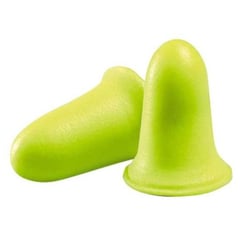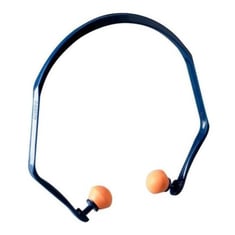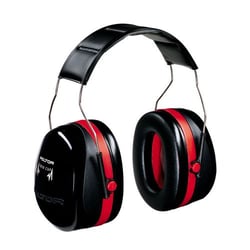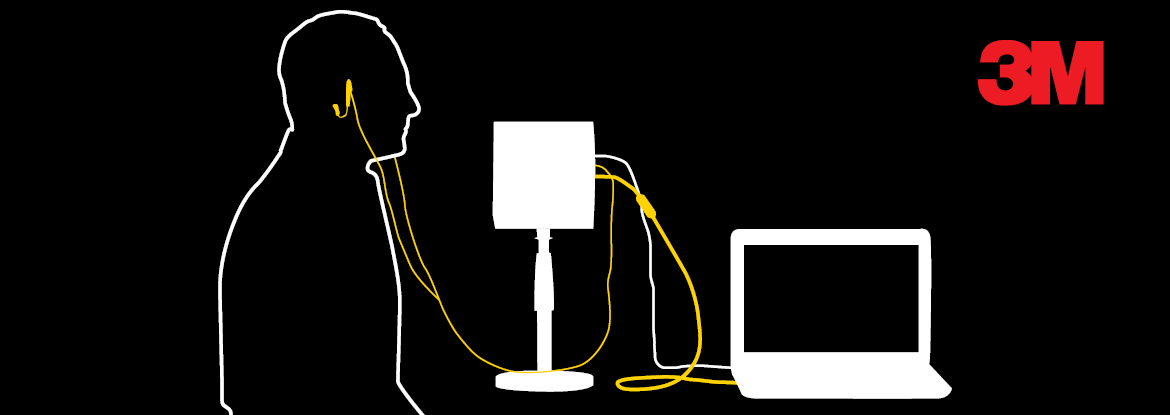The Australian standard AS/NZS 1269.3:2005 Occupational Noise Management Part 3: Hearing Protector program contains requirements and guidance to people who supply, purchase or wear hearing protectors and to encourage the use of effective criteria in their selection, use, care and maintenance. According to the Australian Government Department of Health, in Australia, 3.6 million people suffer from hearing loss and 1.3 million people have a hearing condition that could have been prevented. Research shows using fit testing capabilities can help identify workers who may be at risk of developing noise-induced hearing loss. With every new hearing protection recommendation, standard, regulation and astonishing statistic, it's clear that fit testing is an excellent solution to help protect your workers.
What is Hearing Fit Testing?
A hearing fit test measures the amount of noise reduction, or attenuation, hearing protection provides while it is being worn by a worker. This measurement is commonly referred to as a “Personal Attenuation Rating” or PAR. Hearing fit testing is performed to verify that the attenuation is adequate for the worker and to help validate the worker is using the correct hearing protection for their work environment.
Why is it Necessary?
|
Much like a fingerprint, an individual’s ears are unique. As everyone has their own unique ear canals, the different personal attenuation ratings experienced amongst individuals in the same workplace wearing the same model of hearing protection is expansive. This means that even if every employee was given the highest rated earplugs, they will all experience vary attenuation. It's important to note an individual can have two completely different ears as well. A hearing fit test will also help identify if workers are inserting or wearing the hearing protection correctly. A recent study found that out of 327 experienced hearing protection users, 30% were not properly protected and 17% had to be retrained to ensure an adequate fit and effective protection. Without a hearing fit test, these individuals could inevitably suffer from noise-induced hearing loss (NIHL). |
 |
Can Someone Simply Wear the Highest Rated Hearing Protection?
This is a common question, however, a higher hearing protection level may not always be the most appropriate choice. If too much attenuation is achieved, the user may have trouble hearing important things like warning signals, alarms, moving vehicles, or other workers, which can undermine the safety of the worker. It’s also important that workers do not need to remove their hearing protection in order to communicate with one another.
The 3M™ E-A-Rfit™ Dual-Ear Validation System
The 3M™ E-A-Rfit™ Dual-Ear Validation System is an industry-leading hearing fit test machine that asseses the amount of noise reduction provided to a user of hearing protection. The system uses an objective method called Field Microphone-In-Real-Ear (F-MIRE). During testing, one element of the microphone uses a probe tube passing through the earplug or earmuff cushion to measure the sound level in the ear canal while the second element of the microphone measures the external sound level. The difference between the two measurements allows the attenuation of the hearing protection to be estimated. The 3M™ E-A-Rfit™ Dual-Ear Validation system helps:
- Protect workers
The system uses F-MIRE technology to generate a unique Personal Attenuation Rating (PAR) for each individual in less than 5 seconds for both ears, taking into account the seven standard measured testing frequencies from 3M's Hearing Conversion Program. This allows employers to identify if the hearing protection being used is providing adequate protection for each worker to help prevent NIHL. - Educate workers
The test results give employers the opportunity to educate/retrain workers on how to correctly fit hearing protection. Due to the test's speed, employers are able to dedicate more time to training workers on important details, like the proper earplug insertion technique and/or identifying which 3M earplugs best suit larger or smaller ear canals. - Product selection
Users are able to select hearing protection (earplugs or earmuffs) that best meets their personal needs for comfort, attenuation and the size of the ear canal. The operator is able to test a range of hearing protection available from 3M. - Program Management
The PAR results, fit test dates and other important information can be saved as a reference point for employers. This will allow them to cross-reference the worker with the hearing protection to ensure proper fit and sufficient training has been completed.
How Does the 3M™ E-A-Rfit™ System Work?
FIT Worker puts on their earmuffs or inserts their earplugs. |
TEST Connect to microphones and begin speaker-test sound. |
ASSESS Use PAR to select the correct hearing protection. |
What is 3M's Hearing Conversion Program?
3M’s hearing conservation program includes seven elements of hearing conservation that is key to protecting your workers:
|
MEASURE |
CONTROL |
PROTECT |
ASSESS |
Workers need to be educated on the effects of noise exposure and the reasoning behind the strategies that are put in place to prevent hearing loss, including how to properly use hearing protection. |
Keep accurate, up-to-date and confidential records of your hearing conservation program processes as it includes noise assessments, audio-metric tests, attenuation ratings, and training. |
EVALUATE |
What Hearing Protection is in the 3M Range?
Hearing protection comes in a range of different styles and is used as a preventative measure to help reduce hazardous noise exposure in the workplace. It acts as a barrier, reducing the level of sound entering the inner ear to avoid damaging the sensitive hair cells within that allow the brain to detect sounds. Without hearing protection, workers are at risk of noise-induced hearing loss.
 |
 |
 |
 |
 |
 |
 |
 |
ATOM Safety's Fit Testing Service
ATOM Safety has partnered with 3M to offer quantitative hearing fit testing using the E-A-Rfit™ Dual-Ear Validation System. Our experienced and knowledgeable staff are trained to perform hearing fit testing for 3M’s most popular earplugs, earmuffs, and communications headsets. We can come to your workplace to test the effectiveness of your workers’ hearing protection and make recommendations based on test results.
With various hearing protection options available it is sometimes difficult to figure out the best hearing protection for your workplace. For further information about the different types of hearing protection available, contact the team at ATOM Safety.
